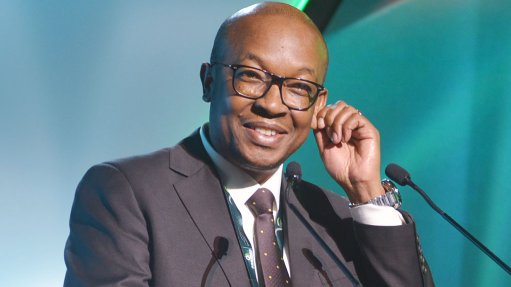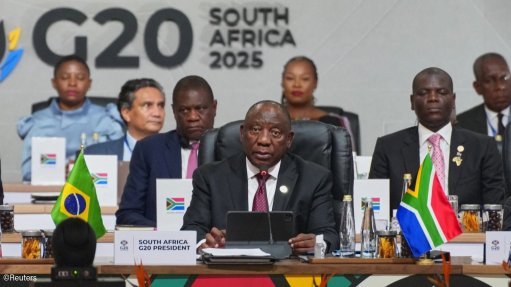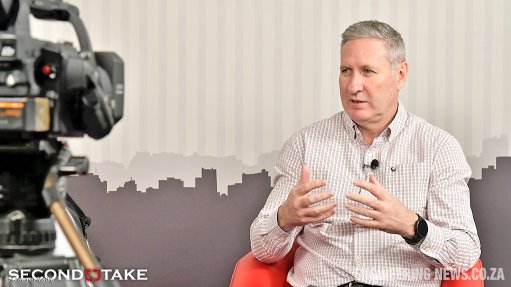Demand exceeding capacity at Port of Durban
The Port of Durban is already under pressure to develop new capacity to meet container handling and storage demand, State-owned logistics group Transnet’s Durban dig-out port programme director Marc Descoins tells Engineering News.
“While the necessary investments in expanding the existing facilities continue, additional capacity is needed.”
Descoins highlights that an increase in demand and the changing nature of the shipping industry are two primary drivers for an additional port in Durban.
Significant growth forecast in the cargo volumes passing through the port, coupled with the need to accommodate larger ships, is expected to strain the port’s capacity over the next ten years.
With more than 4 000 commercial vessels calling at the Port of Durban every year, it is the busiest port in Southern Africa. It is a major conduit for the movement of international goods and a leading gateway that supports import and export commerce, says Descoins.
“Over the last ten years, container ships have almost doubled in size and the primary driver for that is economies of scale, as shipping companies aim to reduce the cost of moving containers and their carbon footprints,” he explains, adding that larger ships require different facilities, such as deeper ports.
The Port of Durban, which was established in the 1800s, is old and unable to accommodate the larger new-generation container ships.
Therefore, Descoins notes, the old Durban International Airport (DIA) in Reunion is the answer to a wider, holistic plan of infrastructural investment. The DIA, bought for R1.85-billion from Airports Company South Africa, was handed over to Transnet in late 2012 to meet the demand for the creation of container capacity in Durban, as well as to create additional automotive and liquid bulk port capacity.
The volume of container trade at the Port of Durban is forecast to grow from the current 2.69-million twenty-foot equiva- lent units (TEUs) to between 9-million TEUs and 12-million TEUs over 30 years, notes Transnet.
The Durban dig-out port project highlights the need to ensure that infrastructure keeps pace with growth and that this growth is sustainable for the long-term prosperity of KwaZulu-Natal and the country as a whole, Descoins explains.
He notes that Transnet aims to complete the concept design phase of the Durban dig-out port project by about the end of June, after which it will move into the prefeasibility stage, which will continue until June 2014 and include more detailed design work.
Following this, Transnet will conduct the feasibility stage of the Durban dig-out port programme, drafting the detailed design and construction plans of the port.
“Completion of the feasibility study is scheduled for the end of 2015, followed by the construction phase, which will run about four years, with the first phase of the new port coming on stream in 2020,” states Descoins.
He warns that, without the dig-out port programme, Durban will not be able to meet future shipping capacity demand and will run out of capacity.
Descoins adds that Transnet also aims to deepen some of the berths within the existing Port of Durban to accommodate larger vessels. “The first berth deepening will start towards the middle of next year and the project will be carried out over three years.”
However, Transnet is still awaiting environmental authorisation for the project, as many lobbyists and environmental groups are questioning and opposing its implementation.
Descoins adds that Transnet also aims to expand the capacity of Pier 1 of the existing Durban container terminal, on Salisbury Island, by the end of 2018.
This planned expansion will add about 1.4-million TEU capacity to Durban’s existing port, as well as provide additional deep-water berthing in the port.
“All these projects will enable Transnet to handle ships with drafts of about 14.5 m efficiently and increase its Durban port capacity to about 4.8-million TEUs,” Descoins points out.
He highlights that the dig-out port is an integral part of Transnet’s contribution towards the achievement of the Strategic Integrated Project (Sip) 2 of the National Infrastructure Plan, which will greatly assist in industrialising the South African economy. “Should the implementation of the Durban dig-out port fail, Sip 2 is likely to be flawed,” Descoins states.
The Presidential Infrastructure Coordi- nating Commission is overseeing the roll-out of the 18 Sips, all of which involve a range of projects.
“If this project is not realised, along with the other Sip 2 projects, our economy will stagnate and South Africa will lose its African stature as a shipment hub, while other ports around the African coast will develop and bypass us,” Descoins notes.
He says the realisation of the Durban dig-out port is positive and is receiving much support from government.
Article Enquiry
Email Article
Save Article
Feedback
To advertise email advertising@creamermedia.co.za or click here
Comments
Press Office
Announcements
What's On
Subscribe to improve your user experience...
Option 1 (equivalent of R125 a month):
Receive a weekly copy of Creamer Media's Engineering News & Mining Weekly magazine
(print copy for those in South Africa and e-magazine for those outside of South Africa)
Receive daily email newsletters
Access to full search results
Access archive of magazine back copies
Access to Projects in Progress
Access to ONE Research Report of your choice in PDF format
Option 2 (equivalent of R375 a month):
All benefits from Option 1
PLUS
Access to Creamer Media's Research Channel Africa for ALL Research Reports, in PDF format, on various industrial and mining sectors
including Electricity; Water; Energy Transition; Hydrogen; Roads, Rail and Ports; Coal; Gold; Platinum; Battery Metals; etc.
Already a subscriber?
Forgotten your password?
Receive weekly copy of Creamer Media's Engineering News & Mining Weekly magazine (print copy for those in South Africa and e-magazine for those outside of South Africa)
➕
Recieve daily email newsletters
➕
Access to full search results
➕
Access archive of magazine back copies
➕
Access to Projects in Progress
➕
Access to ONE Research Report of your choice in PDF format
RESEARCH CHANNEL AFRICA
R4500 (equivalent of R375 a month)
SUBSCRIBEAll benefits from Option 1
➕
Access to Creamer Media's Research Channel Africa for ALL Research Reports on various industrial and mining sectors, in PDF format, including on:
Electricity
➕
Water
➕
Energy Transition
➕
Hydrogen
➕
Roads, Rail and Ports
➕
Coal
➕
Gold
➕
Platinum
➕
Battery Metals
➕
etc.
Receive all benefits from Option 1 or Option 2 delivered to numerous people at your company
➕
Multiple User names and Passwords for simultaneous log-ins
➕
Intranet integration access to all in your organisation

















